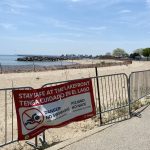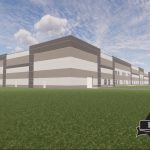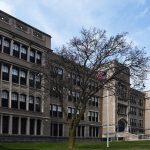Public Input Sought for 2104 Review and Update of 2035 Regional Transportation Plan
Public Meeting and Review Period for the 2014 Review and Update of the Year 2035 Regional Transportation Plan
A public informational meeting has been scheduled to gather input from Southeastern Wisconsin residents on the review and update of the Southeastern Wisconsin Regional Planning Commission’s (SEWRPC) year 2035 regional transportation plan. At the public meeting, attendees will learn more about the year 2035 regional transportation system plan and the every-four-year review and update of the plan.
They will also be able to provide comments on the current review and update. The meeting will be held:
Thursday, May 22, 2014
O’Donnell Park Pavilion
910 E. Michigan Street, Milwaukee
4:00 – 6:30 p.m.
Miller Room
The public meeting will be in an “open house” format, allowing residents to attend at any time between 4:00 p.m. and 6:30 p.m. Staff will be available to individually answer questions and at any time during the meeting, attendees can leave written comments or speak to a court reporter to provide oral comments. Written comments may also be submitted through June 8, 2014, in any of the following ways:
Plan Website: www.sewrpc.org/2014update
E-mail: 2014update@sewrpc.org
Fax: (262) 547-1103
Mail: Southeastern Wisconsin Regional Planning Commission
W239 N1812 Rockwood Drive
P.O. Box 1607
Waukesha, WI 53187-1607
About the 2014 Review and Update
The year 2035 regional transportation plan, completed in 2006 and last updated in 2010, is intended to provide a guide for transportation development in the Region for 20 years into the future, including public transit, bicycle and pedestrian facilities, and arterial streets and highways. SEWRPC reviews and updates the current regional transportation plan every four years. The current review and update will be completed this summer.
This effort is separate from the development of the next major regional transportation and land use plan, titled “VISION 2050”. VISION 2050 will replace the year 2035 regional transportation plan, and is scheduled to be completed about one year following completion of the current review and update. While separate from VISION 2050, the review and update of the 2035 regional transportation plan will inform the VISION 2050 planning work currently being conducted.
The 2014 review and update evaluates plan forecasts, measures transportation system performance, and assesses implementation to date of the plan recommendations. Draft report chapters and other information are available at www.sewrpc.org/2014update. The Commission has also published the attached newsletter summarizing the review and update.
Significant Financial Constraints Affecting Plan Implementation
As part of the review and update, the estimated 2035 plan costs have been compared to revenues expected to be available over the remaining 20 years of the plan. In 2014, existing revenue and the outlook for future available revenue is far more constrained than in 2005 (during development of the original year 2035 regional transportation plan) and in 2010 (during the plan’s first four-year update). As a result, the year 2035 plan can no longer be considered reasonably consistent with existing and expected revenues, and the current limitations on the use of those revenues.
Given the current and expected transportation funding situation, the review and update considers the year 2035 plan a ‘vision’ plan, outlining the desirable transportation system improvements that would address the current and future transportation needs of the Region. In contrast, the review and update necessarily identifies a ‘fiscally-constrained’ year 2035 plan that can be achieved within reasonably expected available revenues.
As a result of the gap in funding between estimated costs and existing and reasonably expected revenues, identified in the review and update, the recommended freeway expansion would not be completed by 2035 and improving and expanding transit would not occur—in fact, transit service levels are expected to further decline by another 11 percent from the current already-reduced service levels. Not implementing the plan due to the limitations of current transportation revenues will have significant negative consequences for Southeastern Wisconsin:
- Traffic congestion and travel delays may be expected to significantly increase, and travel reliability will decrease, as highway capacity improvements are deferred and delayed and public transit is not improved and expanded in the Region’s most heavily travelled corridors, urban areas, and activity centers.
- Transportation-related energy consumption and air pollutant emissions may be expected to be greater as a result of increased traffic congestion and a lack of improvement and expansion of public transit.
- Costly emergency repairs and inefficient pavement maintenance may be expected to be required on the freeway system as segments of freeway and freeway bridges reach the end of their service life and funding does not permit their reconstruction.
- For the estimated 10 percent of Region residents who are unable to use, or cannot afford an automobile, mobility and access to the Region will be severely limited, including with respect to jobs, health care, education, grocery shopping, and other basic travel needs. This will impact minority and low income populations to a greater extent, as minority and low-income populations have lower levels of automobile ownership and disproportionately use and are dependent upon public transit.
- Costs of public infrastructure and services, and the taxes necessary to support them, may be expected to be higher as improved and expanded public transit would not be available to support and promote more efficient higher density development.
The expected consequences of not implementing the year 2035 regional transportation plan may impede economic growth in the Region and diminish quality of life for its residents. As noted above, the 2014 review and update serves to inform VISION 2050, which will attempt to address these and other issues related to the development of the Region’s land and transportation system. The next opportunity for public involvement in the VISION 2050 process will be this July, when staff will ask residents to consider the tradeoffs between different ways the Region could develop by the year 2050 by comparing a series of sketch-level land use and transportation development scenarios. More information on the VISION 2050 process can be found at www.vision2050sewis.org.
NOTE: This press release was submitted to Urban Milwaukee and was not written by an Urban Milwaukee writer. It has not been verified for its accuracy or completeness.
Mentioned in This Press Release
Recent Press Releases by Press Release
Rare Opportunity to see Experimental Dance and Media Installation by three choreographers
Mar 13th, 2024 by Press ReleaseOne night only in new alternative dance space in Milwaukee’s Fifth Ward


















